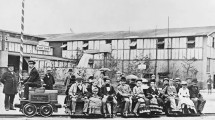Abstract
The integration of one or more electric machines into the drivetrain has resulted in many different powertrain concepts in recent years, ranging from the P2 hybrid to dedicated hybrid transmission (DHT). Two types of DHT with different characteristics are investigated. The first type is the power split hybrid (PS-DHT), which has very low mechanical complexity but needs high electrical effort in the transmission. The second type is multi-mode DHT (MM-DHT), which has a slightly higher mechanical complexity but much less electrical effort when compared with the PS-DHT. A transmission synthesis is used to determine the concept of the MM-DHT. The three different powertrain concepts (i.e., P2, PS-DHT, and MM-DHT) are analyzed and evaluated regarding fuel economy and performance. Legal driving cycles (e.g., Worldwide Harmonized Light vehicles Test Procedure) and the 3D method (driver, driven vehicle, driving environs) are used to investigate the drivetrain in the context of real driving operation. Results show that the two DHT concepts offer better fuel economy than the P2 hybrid drivetrain while still providing the same or even better driving performance. The study also shows that new hybrid concepts created with transmission synthesis can lead to further improvements in hybrid powertrains.














Similar content being viewed by others
Abbreviations
- DHT:
-
Dedicated hybrid transmission
- PS:
-
Power split
- MM:
-
Multi-mode
- SOC:
-
State of charge
- ICE:
-
Internal combustion engine
- EM:
-
Electric machine
- HEV:
-
Hybrid electric vehicle
References
Li, L., Lange, A.: Bewertung und optimierung neuartiger hybridantriebe. In: WKM Symposium 2016, Graz (2016)
Küçükay, F.: Rechnergestützte getriebe-dimensionierung mit repräsentativen lastkollektiven. Automobiltechnische Zeitschrift ATZ (1990)
Janßen, A., Küçükay, F.: Entwicklung von Fahrwerks- und Antriebstrangbauteilen durch simulation kundennaher Betriebsbelastungen. Tagungsband 33. Tagung des DVM-Arbeitskreises Betriebsfestigkeit (2006)
Fugel, M., Küçükay, F.: Identifikation der Antriebstrangbelastungen im kundenbetrieb 2. In: Internationales Symposium für Entwicklungsmethodik, Optimierung komplexer Antriebsstränge - die Herausforderung der Zukunft (2007)
Eghtessad, M., Dietrich, D.: Kundenorientierte dimensionierung von elektrifizierten antrieben. Internationaler VDI-Kongress “Getriebe in Fahrzeugen 2010” (2010)
Weiler, B.: Kundenrelevante auslegung von nutzfahrzeugen. Schriftenreihe des Instituts für Fahrzeugtechnik TU Braunschweig, Nr, p. 43 (2015)
Li, L., Schudeleit, M.: Market-specific dimensioning of drivetrain components. CTI-MAG, the automotive TM, HEV & EV drives magazine by CTI (2013)
Author information
Authors and Affiliations
Corresponding author
Rights and permissions
About this article
Cite this article
Küçükay, F., Lange, A. & Li, L. Highly Fuel-Efficient Transmission and Propulsion Concepts. Automot. Innov. 1, 35–42 (2018). https://doi.org/10.1007/s42154-018-0004-1
Received:
Accepted:
Published:
Issue Date:
DOI: https://doi.org/10.1007/s42154-018-0004-1




